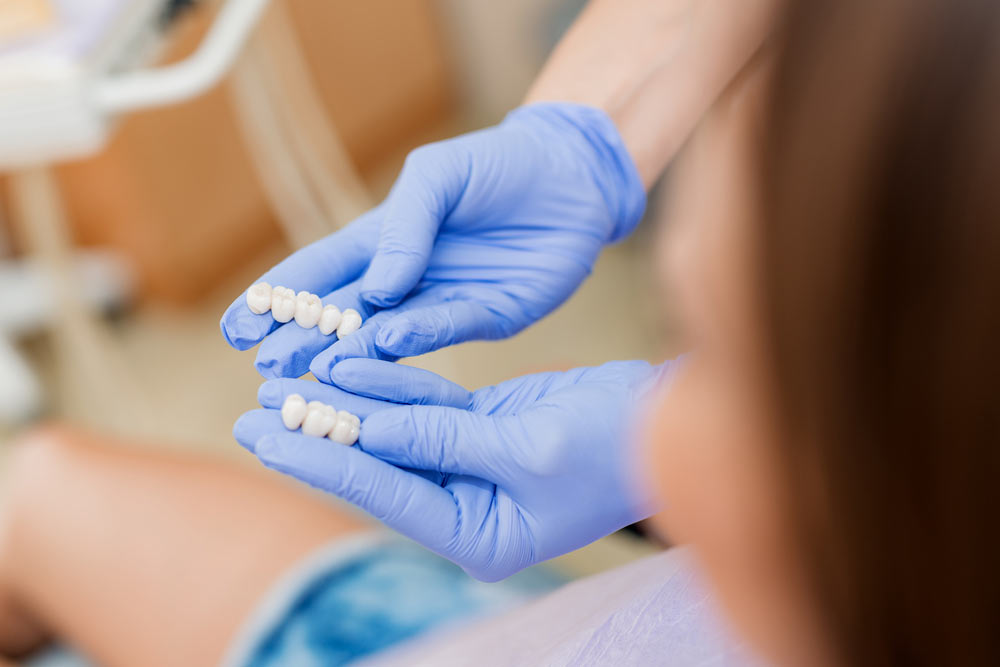Dental crowns and bridges are two types of dental restorations that are commonly used to restore damaged, decayed, or missing teeth. A dental crown is a tooth-shaped cap that fits over the top of an existing tooth, while a dental bridge is composed of two dental crowns fused to one or more fake teeth that is used to replace one or more missing teeth. Both crowns and bridges can also be used to enhance the overall appearance of your smile while restoring proper chewing and speaking functions.
Did You Know?
Dental crowns have been part of dentistry for centuries. In fact, the first evidence of dental crowns was found in artifacts from Ancient Italian civilization. At that time, crowns were primarily made using animal bones, ivory, or gold.
Frequently Asked Questions:
Am I a candidate for a dental crown or bridge?
You may be a candidate for a dental crown if you have one or more teeth that are significantly damaged or decayed to the extent that its structural integrity is compromised. You may also be a candidate for a dental crown if you are having a root canal performed to remove decayed tissue from inside the tooth.
You may be a candidate for a dental bridge if you have one or more missing teeth and/or teeth that are in need of extraction. However, multiple missing teeth must be adjacent to one another in order for a dental bridge to be an effective restoration choice.
To determine if you are an ideal candidate for a crown or bridge, and which is best for you, schedule a consultation with Dr. Michael Guirguis today.
What can I expect when having a dental crown or bridge placed by Dr. Guirguis?
The first step to having a dental crown or bridge placed with Dr. Guirguis is to be properly anesthetized so that the affected area will be numb for the duration of your procedure. Next, Dr. Guirguis will use a dental drill to remove any damaged or decayed tissue before reducing the overall size of the tooth to accommodate a dental crown. Reducing the tooth’s size is an important step to ensure the crown fits properly and does cause an uneven bite. When having a dental bridge placed, these steps will be repeated on the two teeth being used to support the bridge.
Once the affected teeth have been prepared, a dental impression will be taken of your mouth. Dental impressions are used to create a model of your mouth that a dental laboratory will then use to fabricate your custom crown or bridge. Since it can take around 1-2 weeks for your permanent restoration to be completed, you will be fitted with a temporary crown or bridge to wear during that time. After your permanent crown or bridge is fabricated, the temporary will be removed and replaced with the permanent restoration.
Will I need to follow any special instructions afterwards?
After having your temporary crown or bridge placed, you will need to take special care not to dislodge or damage this temporary restoration since it will not fit as well as your permanent restoration, nor will it be as strong. This means that you will need to avoid chewing on that side of your mouth, as well as foods that are excessively hard, chewy, or sticky.
Once your permanent crown or bridge has been placed, you can return to your normal diet. However, you should still be careful when eating hard, crunchy, sticky, or chewy foods as these can increase the risk of damaging your restoration. Other than that, you will care for your crown by brushing twice a day, flossing daily, and visiting your dentist every six months for a dental exam and cleaning.


